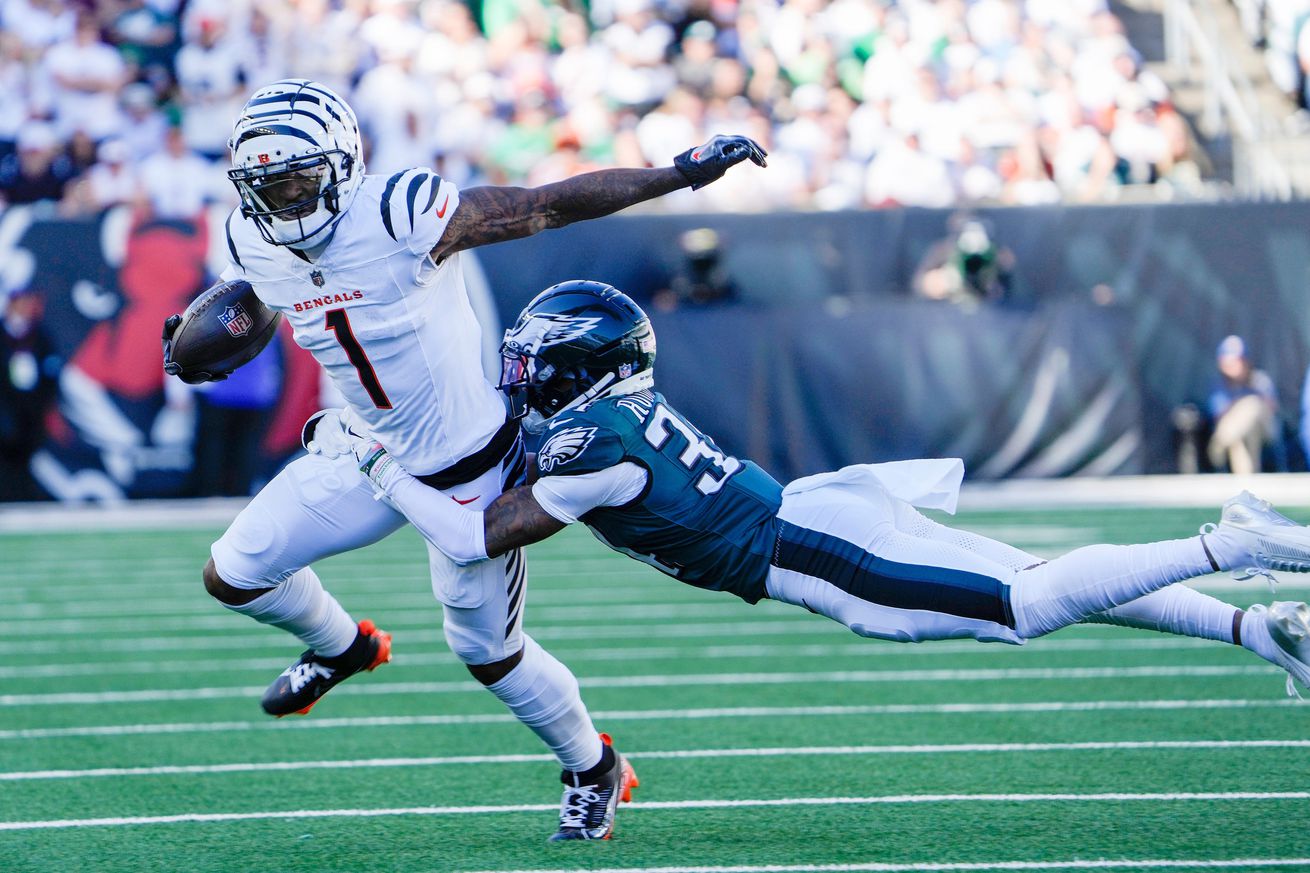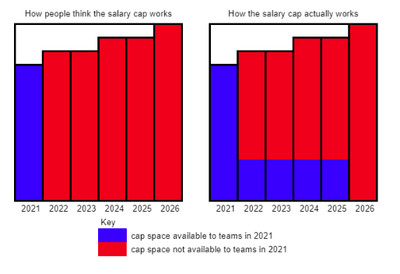
The Cincinnati Bengals and Philadelphia Eagles can’t do contracts the same way.
Fans of the Cincinnati Bengals can finally rest easy knowing that the trio of offensive weapons the team boasts are under contract and locked in for the next several seasons.
It didn’t work out quite like Joe Burrow said in an interview at the Super Bowl, where he noted that the Philadelphia Eagles seem to pay everyone, as the Bengals are still working towards a resolution to the unhappiness voiced by All-Pro defensive end Trey Hendrickson. However, the reality of the situation is likely why Hendrickson and the team have not reached an agreement on a contract extension that would keep Hendrickson with the Bengals for several more seasons.
As noted in the lead-up to the team signing Higgins and Chase, while all teams have the same amount of cap space to spend each season, not every team has the same cash budget. And the difference between the cash positions of various teams across the league is not small.
For Cincinnati cash is an issue, and likely will continue to be for the foreseeable future. Located in a smaller market with an owner who inherited the team, the Bengals are not a franchise that will be at the top of the league in terms of cash spending anytime soon.
In fact, just the opposite, the Bengals consistently come in just below league average when it comes to cash spending on player salaries, without a lot of variance.
NFL Team Cash Spending v. Team Wins.
2011-2024 (modern CBA era)
2020-2024 (5 year)
2022-2024 (3 year) pic.twitter.com/xdCIahp2et— TexansCap (@TexansCap) January 14, 2025
They certainly have years where they spend more and years where they spend less, but at the end of the day the Bengals are a team that must operate and exist off the cash flows generated by the team, rather than making use of large cash infusions from a deep-pocketed owner.
As a result of that difference, the Bengals are forced to operate differently than a team like the Eagles. While the Eagles have the cash on hand, or at least access to enough cash to make it seem like they are “paying everybody”, the way the Eagles accomplish that is by using cash payments to players to dip into future cap seasons.
Teams have done this since the beginning of the salary cap era more than three decades ago, but with greater transparency and visibility for fans, it has become better understood.
At a very basic level the salary cap is supposed to put teams on a level playing field by forcing teams to operate within the same budgetary constraints. However, because of the way the cap accounts for signing bonuses – in that cash paid to a player today is recognized against the cap over as many as five years – teams quickly realized they could give big chunks of cash to players today and take the cap charge in the future.
This, of course, effectively borrows cap space from future seasons so that rather than all teams operating within identical budgetary constraints, cash-rich teams can front-load contracts with large signing bonuses and push the cap hits into future seasons. Not to stop there, cap management teams of several franchises have become very aggressive in borrowing from future seasons, going so far as to add artificial years (called “void years”) to contracts to borrow from future cap years while paying a player today. This graphic is a few years old, but the idea behind the picture remains the same.

And this is exactly how Philadelphia makes it seem like they are able to pay everyone. As of early February the Eagles had almost as much contract money committed to void years as the teams with the second-most and third-most money in void years combined.
Most cap dollars currently in void years:
1. PHI (duh): $390.4M
2. SF: $204.1M
3. CLE: $187.5M
4. NO: $112.1M
5. JAX:$106.55M
6. NYJ: $87.6M
7. MIA: $70.6M
8. DAL: $62.755M
9. TB: $56.1M
10. DET: $52.1M
11. BAL: $50.8M
12. HOU: $47.09M
13. MIN: $47.08M
14. DEN: $40.3M— Nick Korte (@nickkorte) February 12, 2025
The reason Philadelphia is able to do that is simple; they have the cash to spend to borrow from future cap years. The $390 million that the Eagles had in void years as of early February represents $390 million of cash they have spent and given to players, with the cap hits for that spending deferred into future league years.
There’s no question it’s not a risk-free strategy for teams, but with three Super Bowl appearances and a pair of Lombardis in the past eight seasons, the strategy certainly seems to be working for the Eagles.
Just because it works for the Eagles, though, doesn’t make it a viable strategy for all 32 teams, because many of the 32 teams, like the Bengals, don’t have access to $390 million to borrow from future cap years so that they can pay everybody. Instead, teams like Cincinnati are forced into making tough decisions, such as whether to sign an over-30 All Pro defensive end to a significant contract extension, or whether to sign their two young wide receivers.
Simply put, not every team can just pay everybody.